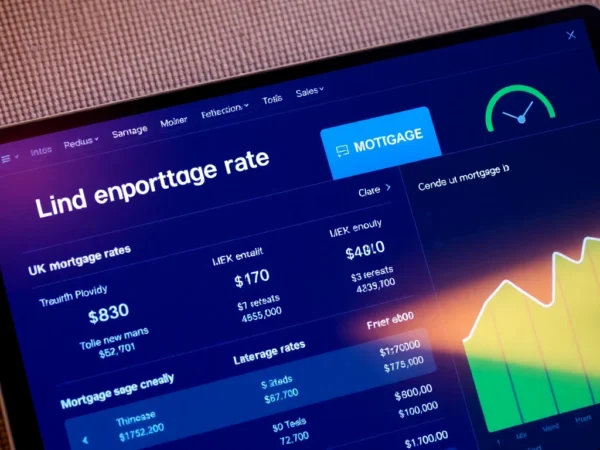Master the Bybit crypto tutorial: Step-by-step guide to enhance your trading skills in 2025
Mastering Crypto Trading with Bybit: An In-Depth Guide for 2025
Introduction to Bybit and Crypto Trading Fundamentals
As the cryptocurrency landscape continues to evolve at an unprecedented pace, platforms like Bybit crypto tutorial have become essential tools for traders seeking to capitalize on emerging opportunities. Bybit stands out as one of the most user-friendly and technologically advanced trading platforms, offering a suite of features designed to cater to both beginners and seasoned professionals. Before diving into the intricacies of trading on Bybit, it’s crucial to understand the core principles that underpin successful crypto trading.
Understanding the Bybit platform’s core features
Bybit’s platform provides a comprehensive suite of tools, including spot trading, derivatives (futures), margin trading, and P2P transactions. Its intuitive interface simplifies complex operations, allowing traders to execute trades swiftly while providing advanced charting tools, real-time data feeds, and risk management options. Key features include leveraged trading up to 100x, customizable trading interfaces, and integrated API support for automation.
Basics of cryptocurrency trading and key terminologies
To effectively utilize Bybit, traders must familiarize themselves with fundamental concepts such as market orders, limit orders, stop-loss and take-profit mechanisms, and leverage. Understanding terms like liquidity, spreads, margin, and volatility is essential to navigating the volatile crypto market. For instance, leverage allows traders to amplify exposure, but it also increases potential risks, making knowledge and disciplined risk management critical.
Setting up your account securely on Bybit
Securing your Bybit account begins with creating a strong password and enabling two-factor authentication (2FA). It’s advisable to complete KYC verification to access higher withdrawal limits and enhance security. Hardware wallets and secure internet practices further protect your assets. Bybit also offers biometric login options on mobile, reinforcing account safety in today’s mobile-centric trading environment.
Executing Your First Crypto Trade on Bybit
Depositing funds and choosing trading pairs
To start trading, you need to deposit supported cryptocurrencies into your Bybit wallet. The process is straightforward: navigate to the ‘Assets’ section, select ‘Deposit,’ and choose your preferred crypto. Bybit supports popular pairs like BTC/USDT, ETH/USDT, and others, making it easy to diversify your portfolio. Always verify deposit addresses carefully and consider utilizing P2P trading if buying directly with fiat currencies.
Placing orders: market, limit, and stop-loss
Placing your first trade involves selecting the appropriate order type. Market orders execute instantly at current prices, ideal for quick entry. Limit orders allow you to specify a desired price point, providing control over trade execution, especially during volatile periods. Incorporating stop-loss orders helps to limit potential losses by closing positions when a predetermined price is reached. Combining these tools effectively enables disciplined trading strategies.
Managing risks and optimizing trades for success
Risk management is central to sustaining profitability. Use position sizing wisely—never risk more than a small percentage of your capital on a single trade. Employ stop-loss and take-profit levels strategically, and consider using leverage cautiously. Regularly review trade performance, keeping detailed logs to identify patterns and refine your approach. Remember, consistency and discipline outweigh impulsive trading, especially in the high-stakes environment of crypto markets.
Advanced Strategies and Tools in Bybit
Using leverage and margin trading effectively
Leverage can amplify gains but also magnifies losses, making it vital to understand its implications. Many traders utilize leverage to maximize small price movements, but overextension can lead to margin calls or liquidation. Effective risk management involves setting appropriate leverage levels, maintaining sufficient margin, and understanding the mechanics of margin calls. Beginners should start with lower leverage and gradually increase their exposure as confidence and experience grow.
Analyzing charts and implementing technical analysis
Successful trading relies heavily on technical analysis. Bybit offers advanced charting tools, including candlestick patterns, RSI, MACD, and Bollinger Bands, enabling traders to identify trends and potential reversal points. Combining these indicators with volume analysis and historical price data enhances the accuracy of trade setups. Regular practice and staying updated with market news are critical for refining these skills.
Employing automation and API integrations for efficiency
For experienced traders, automation via Bybit’s API allows for algorithmic trading, backtesting strategies, and real-time order management. Automation reduces emotional biases and enhances execution speed. Implementing trading bots requires understanding API security protocols, coding skills, and rigorous testing before deploying in live markets. Such tools are especially useful during high-volatility periods when rapid response is crucial.
Mobile Trading and Platform Tips
Navigating the Bybit mobile app for on-the-go trading
The Bybit mobile app replicates the desktop experience, offering a streamlined interface optimized for mobile devices. Features include instant order execution, portfolio overview, and quick access to charts. Navigating the app efficiently saves valuable time during fast-moving price swings, making it an indispensable tool for active traders.
Leveraging notifications and real-time alerts
Setting up real-time notifications for price movements, order fills, and margin calls ensures that traders stay informed without constantly monitoring live charts. Custom alerts for specific price levels or technical indicators facilitate timely decision-making, reducing emotional trading and missed opportunities.
Ensuring security and account protection
Security best practices include enabling 2FA, withdrawing to cold storage when not trading actively, and avoiding public Wi-Fi networks. Regularly updating passwords and monitoring account activity helps detect unauthorized access early. Bybit’s security features provide a robust framework, but user vigilance remains paramount.
Evaluating Performance and Growing Your Portfolio
Tracking trades, analyzing results, and adjusting strategies
Maintaining detailed trading logs allows for performance assessment and strategy refinement. Utilizing analytic tools within Bybit or third-party platforms helps identify profitable patterns and areas for improvement. Periodic reassessment ensures your trading plan remains aligned with market conditions.
Utilizing educational resources and community insights
Continuous learning is vital. Bybit offers comprehensive tutorials, webinars, and community forums where traders share insights and strategies. Engaging with these resources fosters a deeper understanding and helps adapt to market changes swiftly.
Planning for long-term crypto investment success
Beyond short-term trading, building a diversified, long-term portfolio involves strategic asset allocation, disciplined rebalancing, and staying informed about regulatory developments like the recent Gemini MiCA license news or DeFi innovations supported by regulators. A balanced approach, combined with patience and ongoing education, is essential for sustainable growth.










